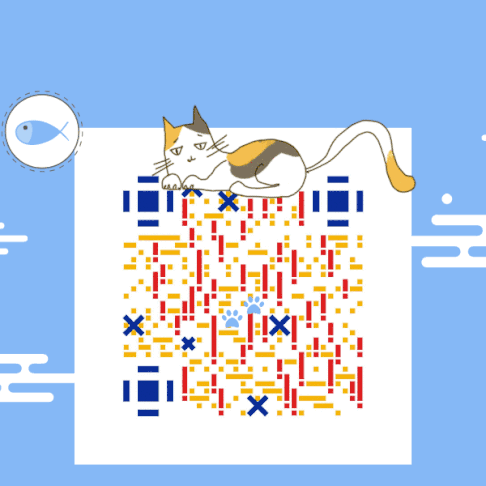Spring源码解析 -- 读取bean元数据
spring源码解析 -- 构造bean
spring源码解析 -- 注入属性
spring源码解析 -- Spring Context
Spring源码解析 -- AOP原理(1)
Spring源码解析 -- AOP原理(2)
Spring源码解析 -- SpringMvc原理
源码分析基于spring 4.3.x
前面的文件已经解析了Spring构造bean(未注入属性)的过程,现在继续解析spring注入属性的过程。
关于阅读源码的思路,可参考 -- 如何阅读java源码
在解析spring读取xml配置的文章说过,spring会将xml属性配置信息转化为spring内部的表示类,并结合属性name,type等元数据构造PropertyValue,存放在BeanDefinition#propertyValues。
而在解析spring构造bean的文章中说过,spring注入属性的方法在
AbstractAutowireCapableBeanFactory#populateBean
protected void populateBean(String beanName, RootBeanDefinition mbd, BeanWrapper bw) {
protected void populateBean(String beanName, RootBeanDefinition mbd, BeanWrapper bw) {
PropertyValues pvs = mbd.getPropertyValues();
...
boolean continueWithPropertyPopulation = true;
if (!mbd.isSynthetic() && hasInstantiationAwareBeanPostProcessors()) { // #1
for (BeanPostProcessor bp : getBeanPostProcessors()) {
if (bp instanceof InstantiationAwareBeanPostProcessor) {
InstantiationAwareBeanPostProcessor ibp = (InstantiationAwareBeanPostProcessor) bp;
if (!ibp.postProcessAfterInstantiation(bw.getWrappedInstance(), beanName)) { // #2
continueWithPropertyPopulation = false;
break;
}
}
}
}
if (!continueWithPropertyPopulation) {
return;
}
if (mbd.getResolvedAutowireMode() == RootBeanDefinition.AUTOWIRE_BY_NAME ||
mbd.getResolvedAutowireMode() == RootBeanDefinition.AUTOWIRE_BY_TYPE) {
MutablePropertyValues newPvs = new MutablePropertyValues(pvs);
// Add property values based on autowire by name if applicable.
if (mbd.getResolvedAutowireMode() == RootBeanDefinition.AUTOWIRE_BY_NAME) { // #3
autowireByName(beanName, mbd, bw, newPvs);
}
// Add property values based on autowire by type if applicable.
if (mbd.getResolvedAutowireMode() == RootBeanDefinition.AUTOWIRE_BY_TYPE) { // #4
autowireByType(beanName, mbd, bw, newPvs);
}
pvs = newPvs;
}
boolean hasInstAwareBpps = hasInstantiationAwareBeanPostProcessors();
boolean needsDepCheck = (mbd.getDependencyCheck() != RootBeanDefinition.DEPENDENCY_CHECK_NONE);
if (hasInstAwareBpps || needsDepCheck) { // #5
PropertyDescriptor[] filteredPds = filterPropertyDescriptorsForDependencyCheck(bw, mbd.allowCaching);
if (hasInstAwareBpps) {
for (BeanPostProcessor bp : getBeanPostProcessors()) {
if (bp instanceof InstantiationAwareBeanPostProcessor) {
InstantiationAwareBeanPostProcessor ibp = (InstantiationAwareBeanPostProcessor) bp;
pvs = ibp.postProcessPropertyValues(pvs, filteredPds, bw.getWrappedInstance(), beanName);
if (pvs == null) {
return;
}
}
}
}
if (needsDepCheck) {
checkDependencies(beanName, mbd, filteredPds, pvs);
}
}
applyPropertyValues(beanName, mbd, bw, pvs); // #6
}
}#1 查找spring上下文是否存在InstantiationAwareBeanPostProcessor。
InstantiationAwareBeanPostProcessor也是spring提供的扩展接口,它继承自BeanPostProcessor,并添加了postProcessBeforeInstantiation,postProcessAfterInstantiation,postProcessPropertyValues这三个方法。#2 存在InstantiationAwareBeanPostProcessor,调用postProcessAfterInstantiation方法#3 处理通过name自动装配#4 处理通过type自动装配#5 调用InstantiationAwareBeanPostProcessor#postProcessPropertyValues扩展方法,很重要,这里完成@Value,@Autowired注解的解析,后面有对应文章解析#6 解析BeanDefinition#propertyValues中的属性
AbstractAutowireCapableBeanFactory#autowireByName
protected void autowireByName(
String beanName, AbstractBeanDefinition mbd, BeanWrapper bw, MutablePropertyValues pvs) {
String[] propertyNames = unsatisfiedNonSimpleProperties(mbd, bw);
for (String propertyName : propertyNames) {
if (containsBean(propertyName)) {
Object bean = getBean(propertyName); // #1
pvs.add(propertyName, bean); // #2
registerDependentBean(propertyName, beanName); // #3
if (logger.isDebugEnabled()) {
logger.debug("Added autowiring by name from bean name '" + beanName +
"' via property '" + propertyName + "' to bean named '" + propertyName + "'");
}
}
else {
...
}
}
}#1 通过name获取bean#2 添加到BeanDefinition#propertyValues,交给下面流程处理#3 声明bean之间的依赖,bean销毁时要判断bean的依赖autowireByType这里就不复述了。
AbstractAutowireCapableBeanFactory#applyPropertyValues
protected void applyPropertyValues(String beanName, BeanDefinition mbd, BeanWrapper bw, PropertyValues pvs) {
...
TypeConverter converter = getCustomTypeConverter();
if (converter == null) {
converter = bw;
}
BeanDefinitionValueResolver valueResolver = new BeanDefinitionValueResolver(this, beanName, mbd, converter);
// Create a deep copy, resolving any references for values.
List<PropertyValue> deepCopy = new ArrayList<PropertyValue>(original.size());
boolean resolveNecessary = false;
for (PropertyValue pv : original) {
if (pv.isConverted()) {
deepCopy.add(pv); // #1
}
else {
String propertyName = pv.getName();
Object originalValue = pv.getValue();
Object resolvedValue = valueResolver.resolveValueIfNecessary(pv, originalValue); // #2
Object convertedValue = resolvedValue;
boolean convertible = bw.isWritableProperty(propertyName) &&
!PropertyAccessorUtils.isNestedOrIndexedProperty(propertyName);
if (convertible) {
convertedValue = convertForProperty(resolvedValue, propertyName, bw, converter); // #3
}
// Possibly store converted value in merged bean definition,
// in order to avoid re-conversion for every created bean instance.
if (resolvedValue == originalValue) {
if (convertible) {
pv.setConvertedValue(convertedValue); // #4
}
deepCopy.add(pv);
}
else if (convertible && originalValue instanceof TypedStringValue &&
!((TypedStringValue) originalValue).isDynamic() &&
!(convertedValue instanceof Collection || ObjectUtils.isArray(convertedValue))) {
pv.setConvertedValue(convertedValue);
deepCopy.add(pv);
}
else {
resolveNecessary = true; // #5
deepCopy.add(new PropertyValue(pv, convertedValue));
}
}
}
if (mpvs != null && !resolveNecessary) {
mpvs.setConverted();
}
// Set our (possibly massaged) deep copy.
try {
bw.setPropertyValues(new MutablePropertyValues(deepCopy)); // #6
}
catch (BeansException ex) {
throw new BeanCreationException(
mbd.getResourceDescription(), beanName, "Error setting property values", ex);
}
}#1 属性已处理,直接复用#2 解析bean引用(如RuntimeBeanReference,RuntimeBeanNameReference),获取引用的bean,对于集合属性,如ManagedArray,ManagedList,如果集合中的元素是bean引用,也会被解析
TypedStringValue则会提取value的值。#3 根据目标属性进行转换
xml配置都是string,如果属性的类型是long,date,这里进行转换#4 缓存结果,避免每次构建bean时都重复操作#5 无法缓存,只能复制结果用于后面流程#6 赋值给bean
转化
下面看看转化过程
AbstractAutowireCapableBeanFactory#convertForProperty
private Object convertForProperty(Object value, String propertyName, BeanWrapper bw, TypeConverter converter) {
if (converter instanceof BeanWrapperImpl) {
return ((BeanWrapperImpl) converter).convertForProperty(value, propertyName); // #1
}
else {
PropertyDescriptor pd = bw.getPropertyDescriptor(propertyName);
MethodParameter methodParam = BeanUtils.getWriteMethodParameter(pd);
return converter.convertIfNecessary(value, pd.getPropertyType(), methodParam); // #2
}
}#1 默认的转化方式#2 使用自定义转化方式
看看默认的转化方式,BeanWrapperImpl#convertForProperty -> TypeConverterDelegate#convertIfNecessary
public <T> T convertIfNecessary(String propertyName, Object oldValue, Object newValue,
Class<T> requiredType, TypeDescriptor typeDescriptor) throws IllegalArgumentException {
PropertyEditor editor = this.propertyEditorRegistry.findCustomEditor(requiredType, propertyName);
ConversionFailedException conversionAttemptEx = null;
ConversionService conversionService = this.propertyEditorRegistry.getConversionService();
if (editor == null && conversionService != null && newValue != null && typeDescriptor != null) { // #1
TypeDescriptor sourceTypeDesc = TypeDescriptor.forObject(newValue);
if (conversionService.canConvert(sourceTypeDesc, typeDescriptor)) {
try {
return (T) conversionService.convert(newValue, sourceTypeDesc, typeDescriptor);
}
catch (ConversionFailedException ex) {
// fallback to default conversion logic below
conversionAttemptEx = ex;
}
}
}
Object convertedValue = newValue;
if (editor != null || (requiredType != null && !ClassUtils.isAssignableValue(requiredType, convertedValue))) { // #2
if (typeDescriptor != null && requiredType != null && Collection.class.isAssignableFrom(requiredType) &&
convertedValue instanceof String) {
TypeDescriptor elementTypeDesc = typeDescriptor.getElementTypeDescriptor();
if (elementTypeDesc != null) {
Class<?> elementType = elementTypeDesc.getType();
if (Class.class == elementType || Enum.class.isAssignableFrom(elementType)) {
convertedValue = StringUtils.commaDelimitedListToStringArray((String) convertedValue);
}
}
}
if (editor == null) {
editor = findDefaultEditor(requiredType);
}
convertedValue = doConvertValue(oldValue, convertedValue, requiredType, editor);
}
boolean standardConversion = false;
if (requiredType != null) {
// Try to apply some standard type conversion rules if appropriate.
if (convertedValue != null) {
if (Object.class == requiredType) {
return (T) convertedValue;
}
else if (requiredType.isArray()) { // #3
if (convertedValue instanceof String && Enum.class.isAssignableFrom(requiredType.getComponentType())) {
convertedValue = StringUtils.commaDelimitedListToStringArray((String) convertedValue);
}
return (T) convertToTypedArray(convertedValue, propertyName, requiredType.getComponentType());
}
...
}
else {
// convertedValue == null
if (javaUtilOptionalEmpty != null && requiredType == javaUtilOptionalEmpty.getClass()) {
convertedValue = javaUtilOptionalEmpty; // #4
}
}
if (!ClassUtils.isAssignableValue(requiredType, convertedValue)) {
... // #5
}
}
return (T) convertedValue;
}#1 PropertyEditor为空,使用ConversionService#2 PropertyEditor不为空,使用PropertyEditor#3 处理数组,集合等类型的属性,这里会遍历集合元素,递归调用convertIfNecessary转化,再收集处理结果。#4 对转化结果是空值的情况进行处理#5 异常情况,会重复调用一遍conversionService
PropertyEditor,ConversionService都可以自定义属性的转化操作。
赋值
AbstractAutowireCapableBeanFactory#applyPropertyValues方法#6步骤负责赋值给bean的属性。
这里调用AbstractNestablePropertyAccessor#setPropertyValues -> AbstractNestablePropertyAccessor#setPropertyValue
public void setPropertyValue(PropertyValue pv) throws BeansException {
PropertyTokenHolder tokens = (PropertyTokenHolder) pv.resolvedTokens;
if (tokens == null) {
String propertyName = pv.getName();
AbstractNestablePropertyAccessor nestedPa;
try {
nestedPa = getPropertyAccessorForPropertyPath(propertyName); // #1
}
catch (NotReadablePropertyException ex) {
throw new NotWritablePropertyException(getRootClass(), this.nestedPath + propertyName,
"Nested property in path '" + propertyName + "' does not exist", ex);
}
tokens = getPropertyNameTokens(getFinalPath(nestedPa, propertyName));
if (nestedPa == this) {
pv.getOriginalPropertyValue().resolvedTokens = tokens;
}
nestedPa.setPropertyValue(tokens, pv); // #2
}
else {
setPropertyValue(tokens, pv);
}
}#1 根据propertyName获取不同的属性访问器(set方法引用)
getPropertyAccessorForPropertyPath返回的是BeanWrapperImpl,他继承了AbstractNestablePropertyAccessor。
这里支持嵌套属性,如Blog中存在author属性,而Author存在name属性,对Blog的bean可配置author.name,这里返回的是blog的author属性对应的BeanWrapperImpl。
#2
AbstractNestablePropertyAccessor#setPropertyValue -> AbstractNestablePropertyAccessor#processLocalProperty -> PropertyHandler#setValue -> BeanWrapperImpl#setValue
可以看到通过反射调用bean的set方法了。
如果您觉得本文不错,欢迎关注我的微信公众号,您的关注是我坚持的动力!

最后
以上就是失眠魔镜最近收集整理的关于spring 源码深度解析_spring源码解析 -- 注入属性的全部内容,更多相关spring内容请搜索靠谱客的其他文章。








发表评论 取消回复